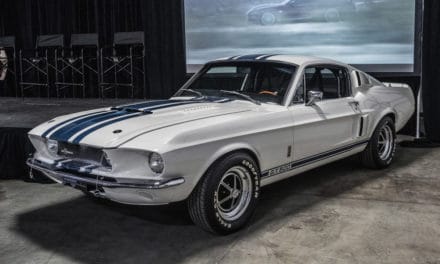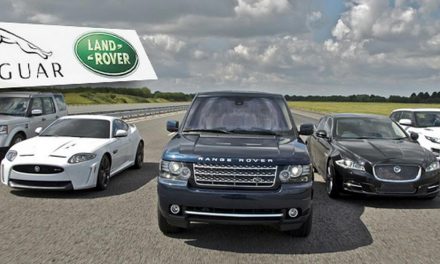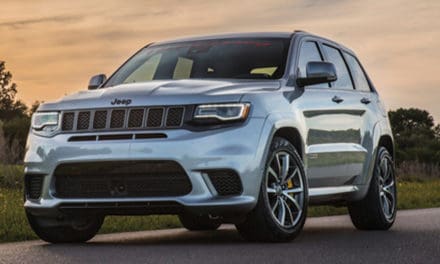It’s been a while now that downsizing has been taking over the entire car industry and we can now observe the practical effects, rather than guess the outcome. So, what is the verdict up to now? Well, it seems that if internal combustion engines are here to stay, so is downsizing.

What is downsizing?
Simply put, it is a way of equipping a car with a smaller engine with fewer cylinders, but keeping the same power that the bigger engine provided or even surpassing it. What propelled downsizing is the fact that car manufacturers were draining out all of their ideas that would enable them to adhere to the ever-tightening emissions regulations, so making the engines smaller was one of the last options. And this is not the first time this has happened. In the 1970s there was a huge oil crisis that axed any fun from the US car industry, so the Mk2 Mustang was a dull car that was a shame to the glorious name.
Things were different this time, though. Downsizing did include reduction in displacement, but it did not cut the edge of the engines, but rather sharpened it. This became possible with the help of new technologies that were science fiction in the 1970s. These include things like variable geometry turbochargers (or just generally turbochargers which are lighter, more reliable and more efficient than the old units), use of new materials that deal with high temperatures better and wear less, new designs of compressor blades, direct fuel injection which enables more efficient use of fuel and improves combustion, variable valve timing controlled by ECU rather than camshaft alone, cylinder deactivation… All of these together made it possible for the smaller engines to safely employ turbochargers that boost the power to the levels of far bigger naturally aspirated engines.

Is it efficient in practice?
One of the most common examples of a successful downsizing is the three-cylinder 1.0 EcoBoost engine from Ford. It has several power ratings, successfully replacing at least three engines in the lineup and being used in cars that range in size from the Fiesta to Focus, to MAX models including the massive Grand C-MAX and van-like Tourneo and providing the same or better performance and unparalleled fuel efficiency. AutoBild tested it for 62,000 miles and it proved very reliable and a total victory for Ford. Moreover, having such a small engine also reduces weight and leaves more room for other improvements.
On the other hand, there are some examples which show that not all companies managed to provide reliability to go with the newly acquired efficiency. And even the fuel efficiency has often been questioned, some real world tests showing utter lack of agreement with the factory statements. However, the increasing number of companies that produce efficient and reliable downsized engines – including the likes of Fiat, Kia, Hyundai, Citroen, Renault/Nissan, Toyota and more – means that successful downsizing is completely plausible and that the lacking ones just need to up their game, which is bound to happen if they plan to stay competitive. And the sensible buyers love the improved fuel efficiency, lower insurance and registration costs and the same or even higher power rating.
The naysayers
On the other side of the spectrum we find the people who are in love with high performance cars and being sensible is definitely not their main concern. Any new technology is bound to be met with distrust and this is especially so when it tampers with something that is beloved. And that something is our dear V8s and V12s. These seem to be dying out due to downsizing and, understandably, petrolheads are complaining.
Porsche, for example, was telling us that it was impossible to put a turbo in the Cayman from an engineering point of view (while we have a pretty big consensus that they were protection the flagship position of the 911 against the mid-engined driver’s joy that the Cayman is) and now they have a 2.5 l four-cylinder boxer with – a turbocharger. BMW gave up on the beloved V8 beasts to make room for the turbo V6 ones; Ferrari has been proudly defending the joy of using naturally aspirated engines and their latest F12 still features a 6.3 V12 without forced induction, but it is becoming a loner even within its own lineup, the latest GTC4Lusso T version employing a turbo; Mercedes-AMG in its 63 AMG cars went from a 6.2 l NA V8, to 5.5 V8 biturbo, to 4.0 V8 biturbo with direct injection, each smaller version packing more power and torque and consuming less fuel, not to mention the 375 hp 2.0 I4 in the A45 AMG; Audi ditched the 4.2 V8 for 3.0 V6; even Formula 1 cars have switched to tiny 1.6 V6 engines that chunk out 600 hp…
However, despite the obvious capabilities, car fans are aware that numbers aren’t everything when it comes to driving joy. The beautiful soundtrack and seamless power delivery of massive naturally aspirated engines are beloved for a reason and we are reluctant to let go of those.
Still, just like any new technology, new developments that are already rearing their heads are sure to make the more modern engines far more appealing. It pains me to say this, but we are almost certain to leave the huge engines behind as the downsized ones are getting better and better at providing the same seamless acceleration and more power for far less money.
So, what’s the verdict – is downsizing making cars boring?
No, it’s not. Smaller engines in economy cars have greatly benefitted from downsizing. Their fuel efficiency still varies when compared to the official values, but this was true for the naturally aspirated engines as well. The progress is obvious and it is only going to improve further. Moreover, these small engines might get even more value in hybrid cars that will further reduce consumption and add to the power and torque piles.
As for the sports cars, we’ll hear nagging about NA engines, but in reality I don’t see many people complaining about the engine in the AMG GT. The thing is that it started out with the 4.0 instead of being downsized from 6.2, or 5.5 and nobody seems to be complaining. This will also make sports cars affordable for far more people and I think not many will complain that their new 400hp+ car has forced induction, when they could only see 400hp+ naturally aspirated cars in magazines before.
As for the filthy rich who choose cars with no regard to cost or practicality, they will still have options. We’ve mentioned the new Ferrari F12, and the likes of Chiron have a pair of V8s joined together in W16 configuration and aided by four turbochargers. In the car world, if you have enough money, you can get anything.
Despite its drawbacks, downsizing definitely comes with lots of perks even in its initial stages and it is pushing the overall automotive tech development forward. Their development can be viewed from the example of that of the automatic transmissions. They used to be clunky, unreliable, expensive and less efficient in terms of fuel and performance. Well, they have developed into rocket-fast, double-clutch beasts with better performance and fuel efficiency than the manuals provide. Still, I do love manuals…






